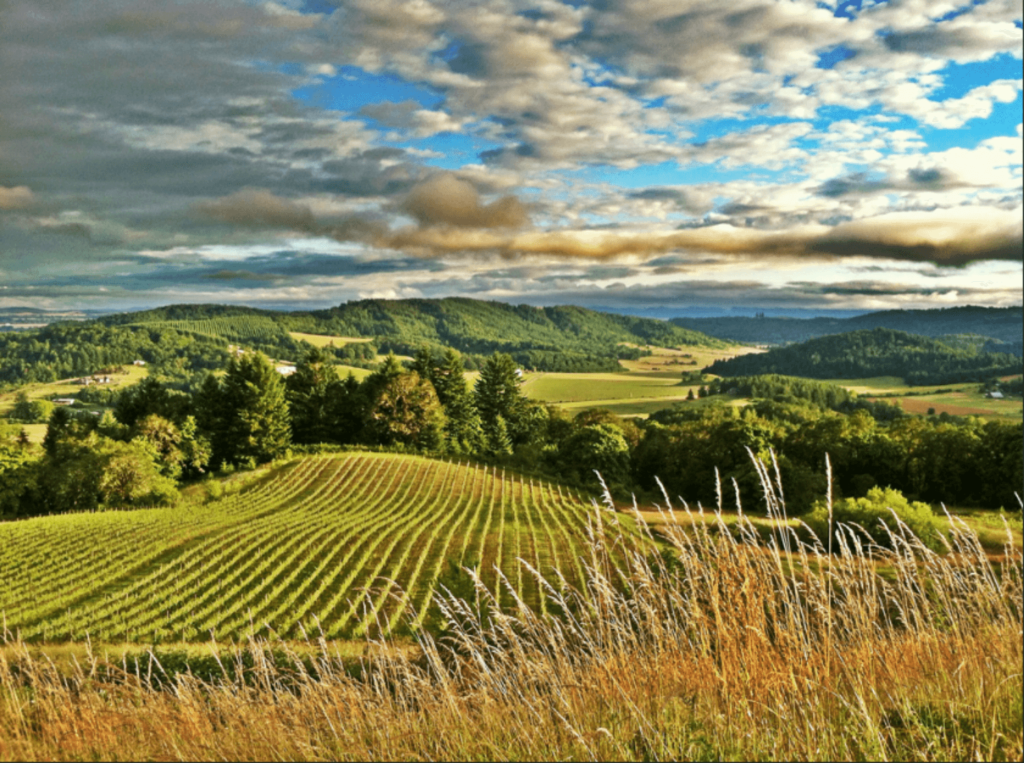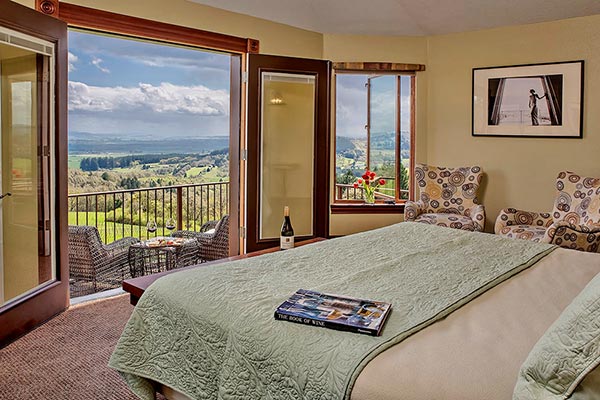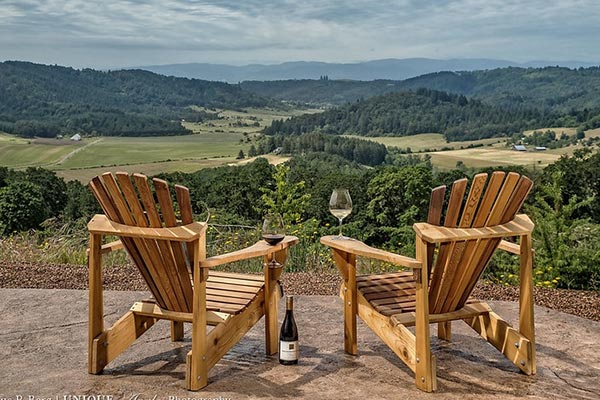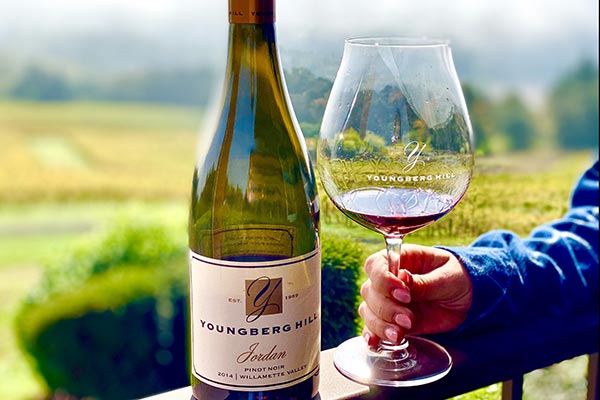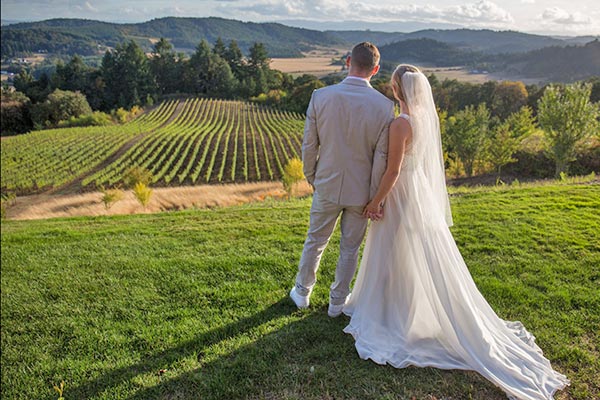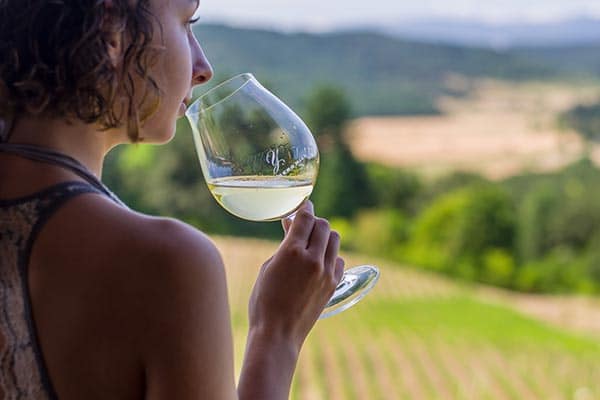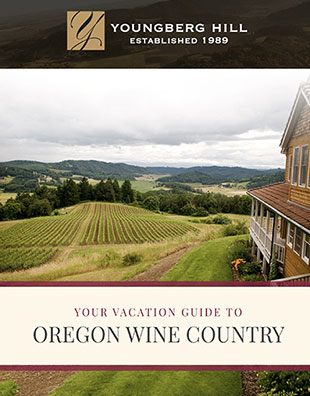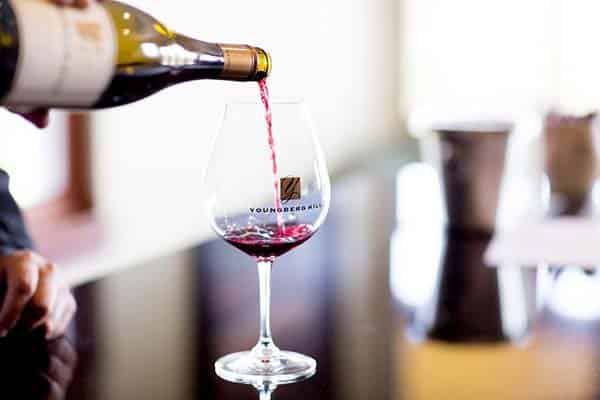 In Oregon, you will discover a rigorous commitment to high-quality wines. Despite the state being third in wine grape production, wineries remain dedicated to the creation of small-batch artisan wine, and it shows in the quality of the wine.
In Oregon, you will discover a rigorous commitment to high-quality wines. Despite the state being third in wine grape production, wineries remain dedicated to the creation of small-batch artisan wine, and it shows in the quality of the wine.
The largest AVA within the state is the Willamette Valley AVA. Its mild climate and soil combined with its concentration of top-notch vineyards and wineries have earned it the distinction of also being labeled Oregon Wine Country—no small feat in a state with such high standards.
Download Our Free Vacation Guide
The Willamette Valley AVA
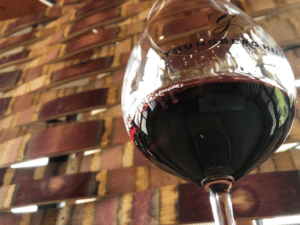 The Willamette Valley AVA is famous for its Pinot Noirs. Pinot Noir grapes were first planted here in the 60s (first by Richard Sommer and later by David Lett) and have since thrived. Today, more than 80 percent of Oregon’s Pinot Noir comes from the Willamette Valley.
The Willamette Valley AVA is famous for its Pinot Noirs. Pinot Noir grapes were first planted here in the 60s (first by Richard Sommer and later by David Lett) and have since thrived. Today, more than 80 percent of Oregon’s Pinot Noir comes from the Willamette Valley.
The climate in the Willamette Valley allows the fruit to develop flavor and complexity during the growing season while still retaining its natural acidity. Sample a glass of Willamette Valley Pinot Noir, and you’ll discover subtle flavors, supple textures, and crisp, refreshing acidity along with ripe tannins. As Pinot Noir is sensitive to differences in climate, however, you will find complex variations from each vineyard and from each year.
The Willamette Valley has more certified biodynamic acreage than any other AVA in the country, and when you take care of the land, it naturally follows that the fruit it produces will be of better quality.
Labeling regulations are strict in Oregon. To designate a wine as belonging to a specific AVA in Oregon, 95 percent of the wine’s grapes must be from that region (and 100% from Oregon), which is higher than the country’s standard of 85 percent.
And for an Oregon wine to be labeled as a specific varietal, 90 percent of the wine has to be of that grape variety—15 percent higher than the country’s standard. There are some exceptions, but Oregon’s famed Pinot Noir is held to these high standards.
Northern Willamette Valley AVAs
The Willamette Valley AVA is the largest AVA in the state. The larger Willamette Valley AVA also includes seven more specific AVAs. These arose after various vineyards and wineries petitioned the Alcohol and Tobacco Tax and Trade Bureau (TTB), arguing that these regions produced wine distinct from others within the Willamette AVA. The newest AVA was granted official status as of January 2019.
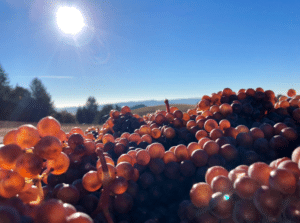 Chehalem Mountains AVA
Chehalem Mountains AVA
The geography and climate are the two main features that make this region distinct. These mountains contain the largest peak in the Willamette Valley, Bald Peak, which affects the weather for the Chehalem Mountains AVA in addition to surrounding AVAs. You’ll find all three hillside soil types here—basaltic, ocean sedimentary, and loess. This leads to wines with a uniquely bright, intense, spicy cherry character—somewhat more heightened than the silky cherry typically associated with Oregon Pinot Noir.
Dundee Hills AVA
The first grapes in the Willamette Valley were planted here, and it is the most densely planted region in the valley and beyond that, the state. It is protected from the ocean climate by the Coast Range and is almost entirely basaltic landmass. Consequently, you’ll find acidic wines with tart, fruity flavors here.
Eola-Amity Hills AVA
This AVA comprises the Eola and Amity Hills. The soil of this AVA is what primarily influences the characteristics of wines made from grapes that are grown here—volcanic basalt mixes with marine sedimentary rocks and alluvial deposits, which makes for shallower, rockier soil. In turn, this leads to well-drained soils from which grows small grapes with great concentration.
McMinnville AVA
According to Willamette Valley Wine, the McMinnville AVA contains “uplifted marine sedimentary loams and silts with alluvial overlays and a base of uplifting basalt.” The soil here is uniquely shallow for winegrowing, and the planted slopes are sheltered by the Coast Range Mountains, which results in lower rainfall. The soil brings a bright acidity and the cool winds thicken the skins of the grapes, adding a balancing structure to the wines. Additionally, wines from the McMinnville AVA are known for having darker, deeper colors.
Ribbon Ridge AVA
Uniform ocean sedimentary soils and a sheltered climate are what primarily distinguish the Ribbon Ridge AVA from others. This AVA sits within the larger Chehalem Mountains AVA. Wines from the Ribbon Ridge AVA typically need to age a bit longer for their structure to mellow, but once it does, it results in a wine with plenty of spice and floral aromatics and elegant fruit flavors.
Van Duzer Corridor AVA
The Van Duzer Corridor enjoys near-perfect growing conditions thanks to its unique location. It sits within a gap in the Coast Range, and oceanic winds help regulate the conditions here, keeping this area cooler than others on hotter days and warmer on colder days. Wines from this region have bright, fruity flavors, increased aromatics, and marked acidity.
Yamhill-Carlton AVA
You’ll find unique growing conditions here, as this AVA sits in the rain shadow of the Coast Range and is further protected by the Chehalem Mountains and Dundee Hills. The soils here are some of the oldest in the valley, and the coarse-grained ancient marine sediments drain quickly. Wines from the Yamhill-Carlton AVA are spicy in the nose and feature blue and black fruit flavors.
Explore the Wines of the Willamette Valley AVA
 With over 500 wineries to discover, it may be daunting deciding where to begin touring the Willamette Valley AVA. Why not stay at a vineyard? At Youngberg Hill, you’ll be staying at Oregon’s premier wine country estate, centrally located in the Willamette Valley. You’ll be within a 20-minute drive of over 100 wineries and tasting rooms and within steps of ours.
With over 500 wineries to discover, it may be daunting deciding where to begin touring the Willamette Valley AVA. Why not stay at a vineyard? At Youngberg Hill, you’ll be staying at Oregon’s premier wine country estate, centrally located in the Willamette Valley. You’ll be within a 20-minute drive of over 100 wineries and tasting rooms and within steps of ours.
Whether you’re relaxing and enjoying the panorama from your luxurious quarters or enjoying an incredible glass of our organically-grown wine, Youngberg Hill provides a serene oasis atop a 50-acre hilltop. Your stress will melt away in the peace and tranquility afforded by our gorgeous inn, vineyards, and unmatched views.


